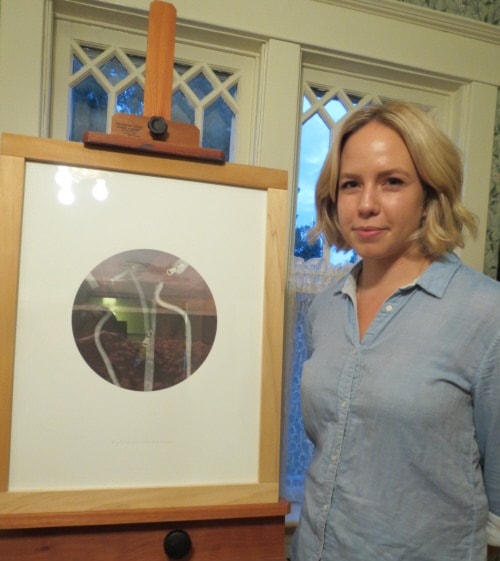Suicide!
The elephant in the room no one wants to talk about.
No one wants to talk about the pain, the anguish, and the questions that are left spinning around in an empty void that was once filled with a loved one who could no longer live with the sounds of silence.
No one dares!
But silence is not the answer, and somehow, some way these sounds of silence need to be lifted.
And people have to start talking. It is, after all, the only way to start healing. It is, in fact, the only way to find a light at the end of a deep, dark tunnel which seemingly has no end.
Last Thursday, at the Beatty House in Rimbey, in the space of a few, short hours the sounds of silence were replaced with plenty of honest, open sharing, brought on at least in part, by the amazing pictures and quotes on display at the Man-Up Against Suicide photography exhibit.
The people who attended the exhibit kept pouring into the Beatty House until every nook and cranny was filled and all available floor space taken up.
Before long it was standing room only.
Emma Palm from Rimbey and Cayley Thomas Haug from Edmonton, united by the loss of both of their brothers to suicide, co-hosted the Movember-funded exhibit with University of British Columbia researchers.
Led by Dr. John Olifee and Dr. John Ogrodniczuk, also a Rimbey native, the Man-Up Against Suicide project interviewed over 40 men and women who were affected by men’s suicide. Their experiences were captured and narrated through photographs.
The pictures, lined up on walls at the Beatty House were poignant reminders of lives lost, of words not spoken, of dispair and sadness and wounds that somehow, tragically, were never healed.
Rod and Mary Palm, who lost their 17-year-old son, Eli to suicide in 2012, were among the crowd at the Beatty House. The amiable couple threaded their way through the crowd, being stopped constantly by friends and relatives who wanted to chat and supply hugs.
The couple agreed the exhibit was an excellent way to get people to open up about suicide and depression. They noted that many families are tragically affected by the aftermath left when a loved one decides to his/her own life.
“I thought it was excellent. It’s breaking the silence. It’s definitely more of a stigma with males,” said Mary Palm, noting her own son hid his depression until it was too late.
She said males have a tendency to stifle their feelings and if they are depressed they often don’t ask for help.
In a short speech, Emma Palm thanked everyone for coming and encouraged them to share their feelings.
“There never is a black and white answer. The only thing everyone agrees on is that talking seems to be the most important. So let’s talk. This is where the people we love live. This is where the people we lost lived and we are doing are best to survive them.”
Dr. Ogrodniczuk, who spoke briefly at the exhibit, said he was pleasantly surprised to see such a good turnout at the exhibit.
“I think it is fantastic to see this exhibit happen. It shows a willingness, courageousness and initiative to do something about the problem. It helps give people a voice. Talking may circumvent the suicide in the first place, silence only perpetuates the problem.”
The doctor said keeping silent about the problem is not a solution.
“When I was growing up in Rimbey the father of one of my friends committed suicide. I don’t remember much about it, but I do remember the silence. It can’t be a silent topic,” he stressed. “It has to be shared by the community.”
Nineteen-year-old Joel Deal and eighteen-year-old Sheldon Brassard were among the young people who dropped in to check out the exhibit.
“It’s a great idea,” said Deal.
“People need to speak up more, get help,” agreed Brassard.
Risk for suicide among men in rural areas increases by 40 per cent or more the further away one gets from urban centres. Men are four to five times more likely to die by suicide than women in rural areas in Canada.
The exhibition at the Beatty House will stay open to the public from October 17 to 20 from 9 a.m. to 5 p.m.
